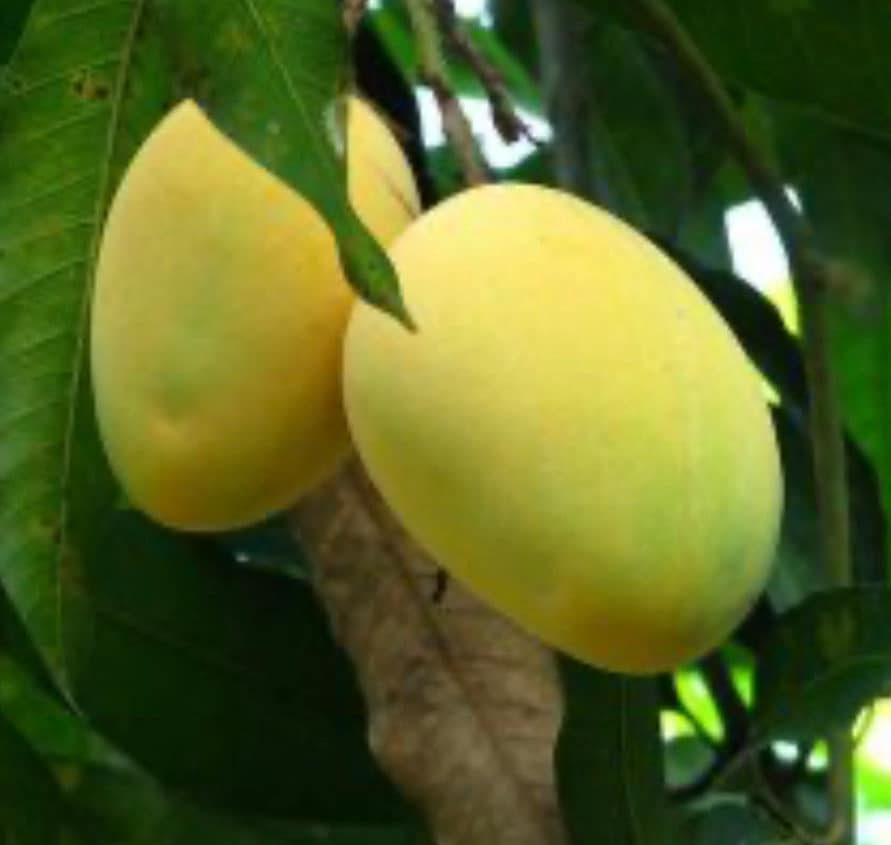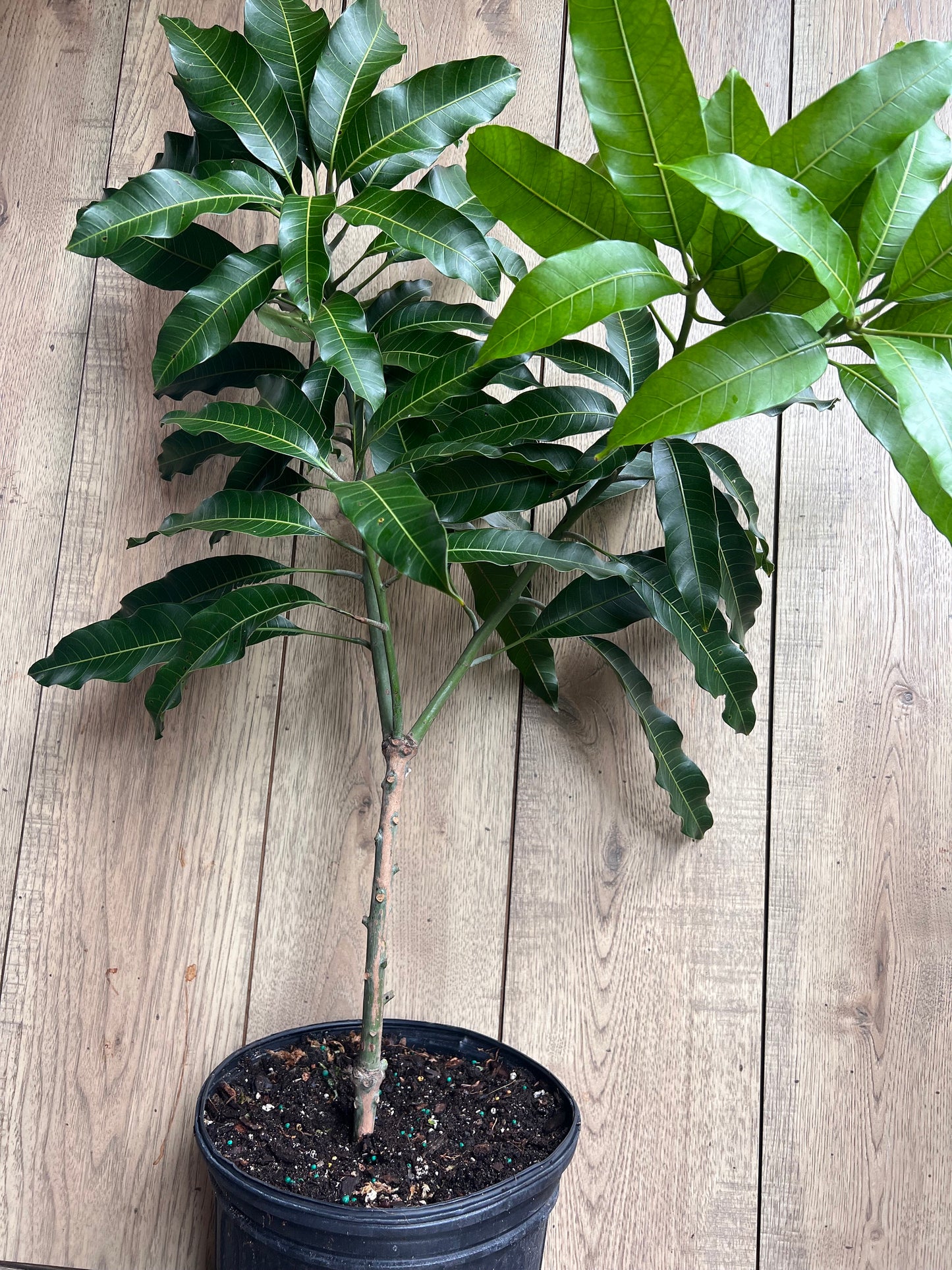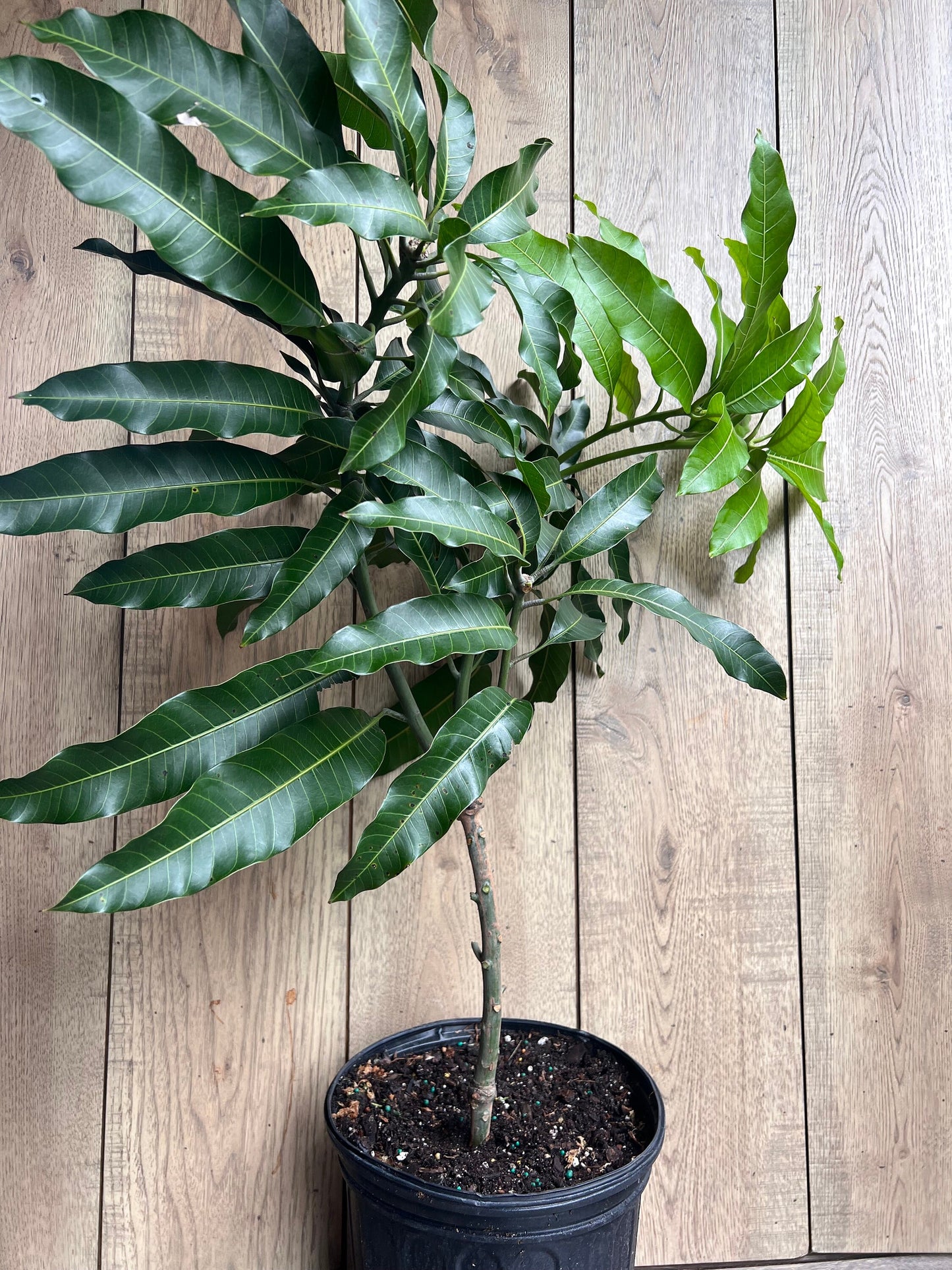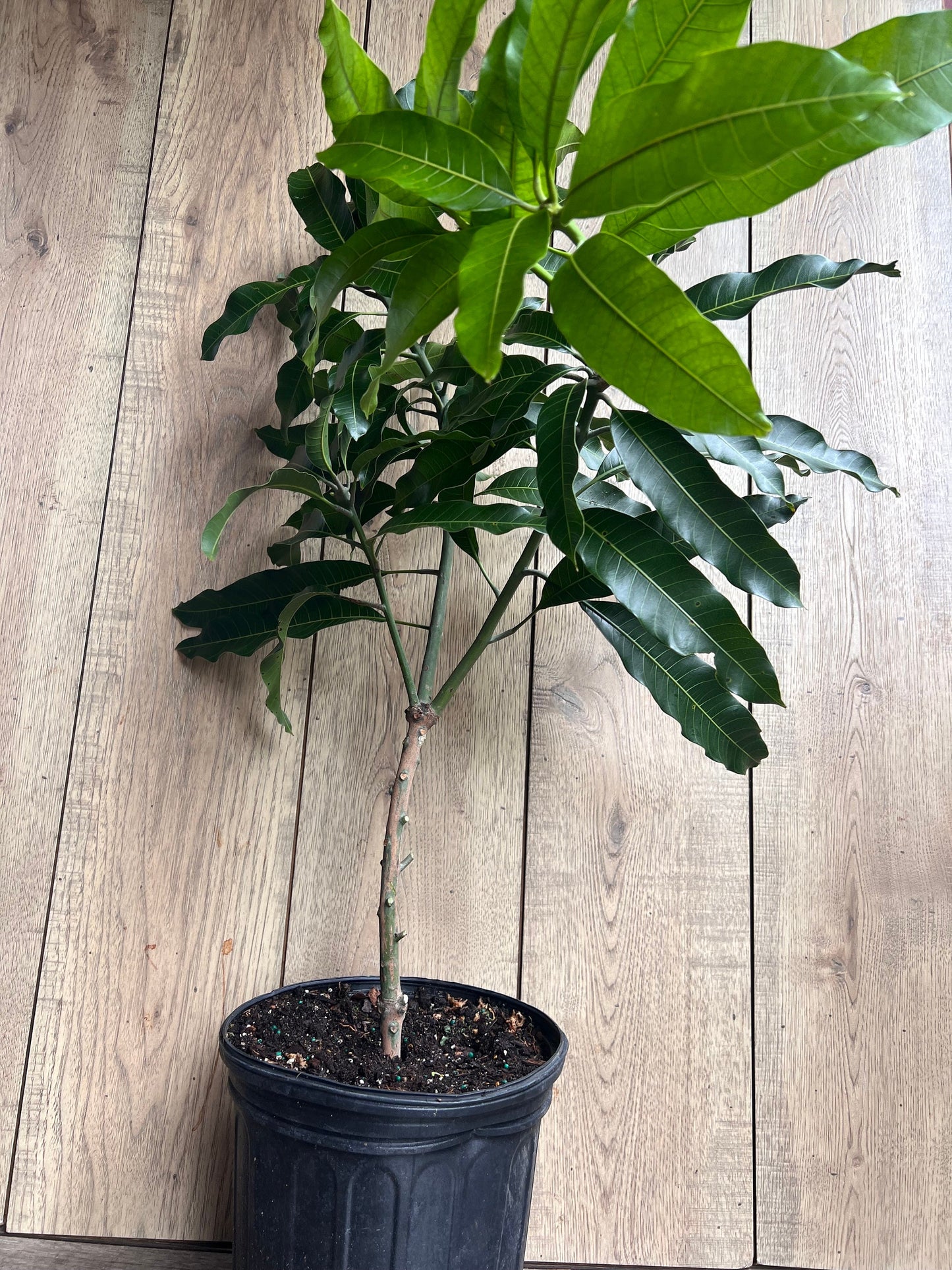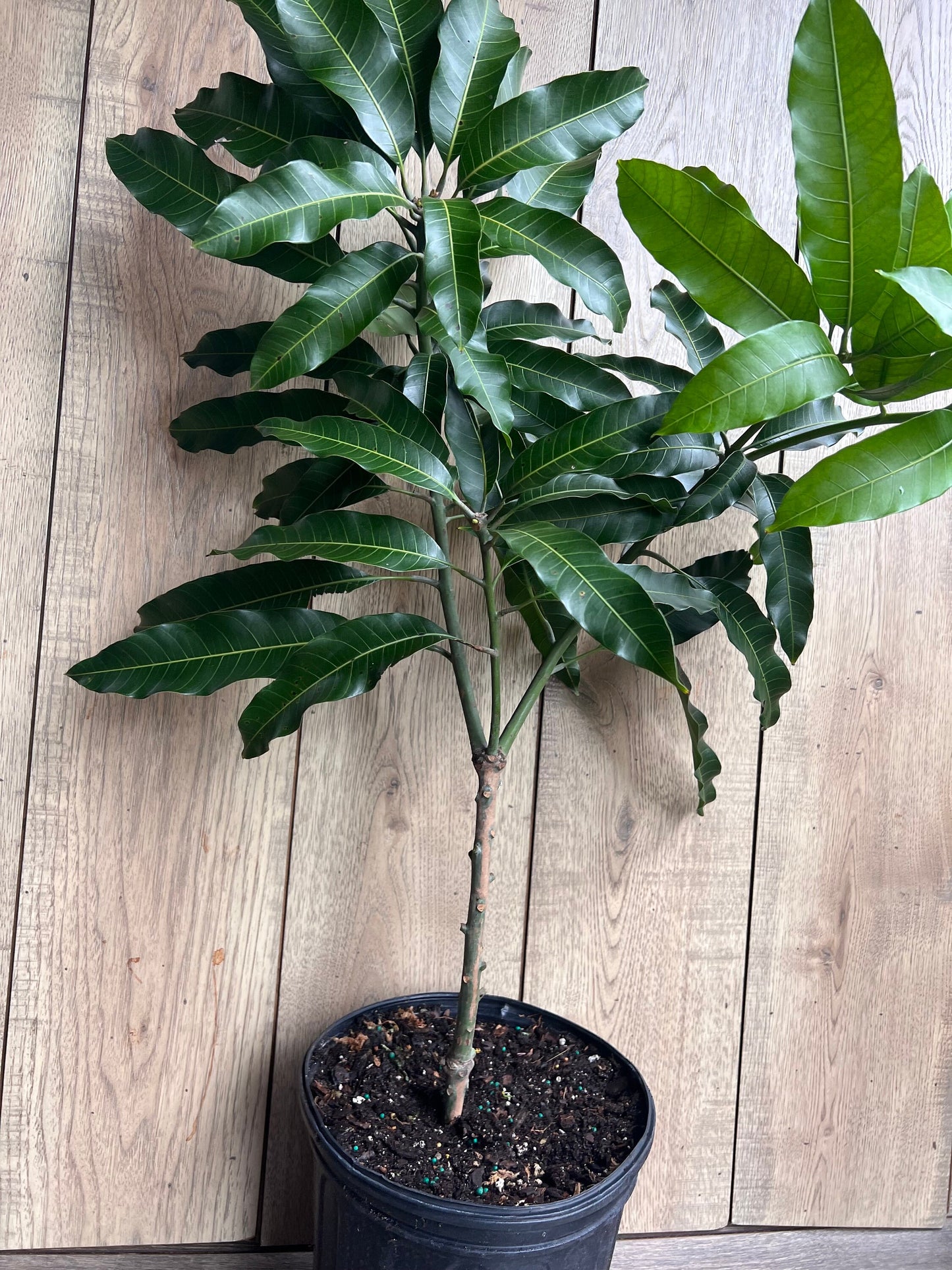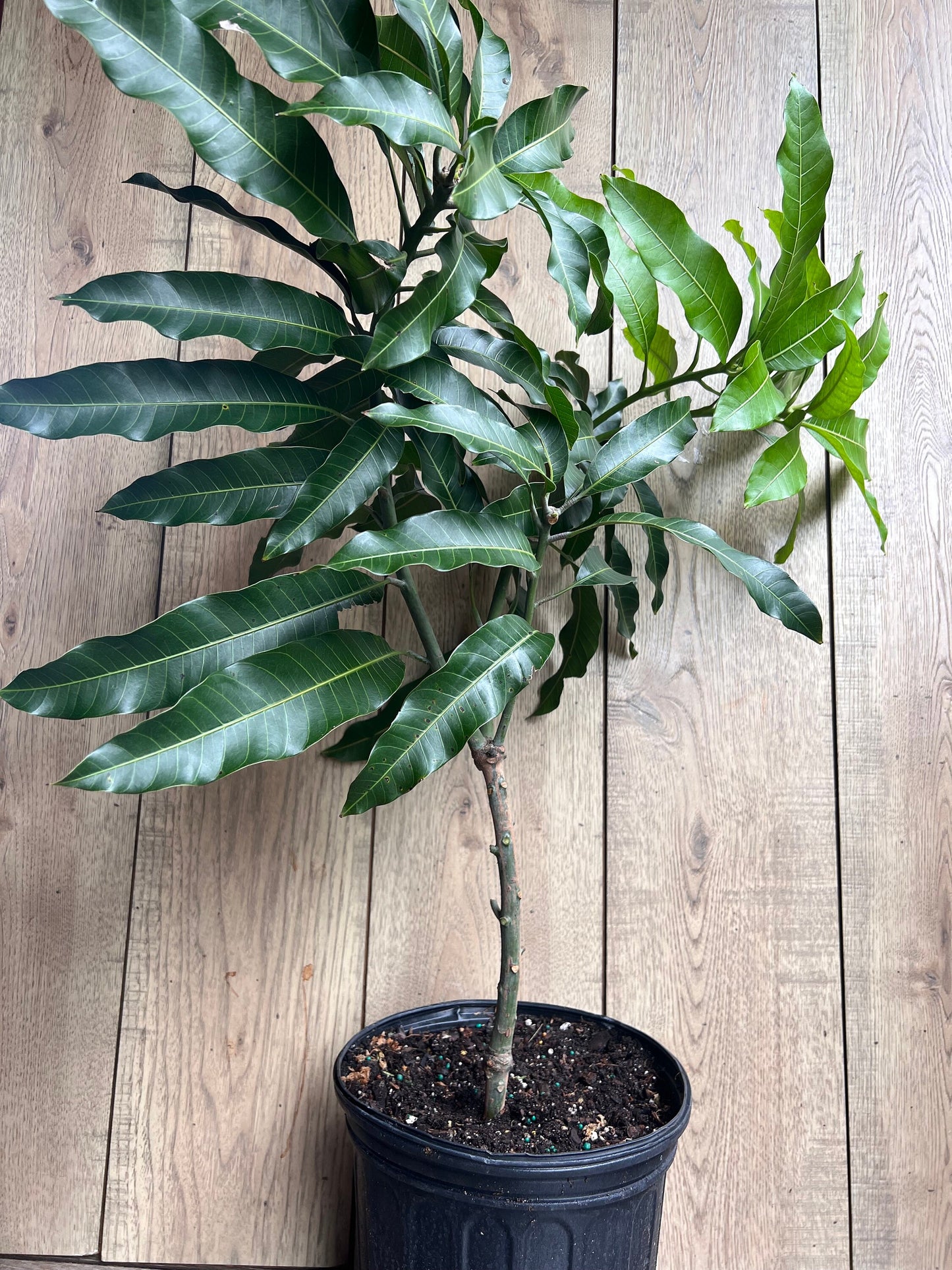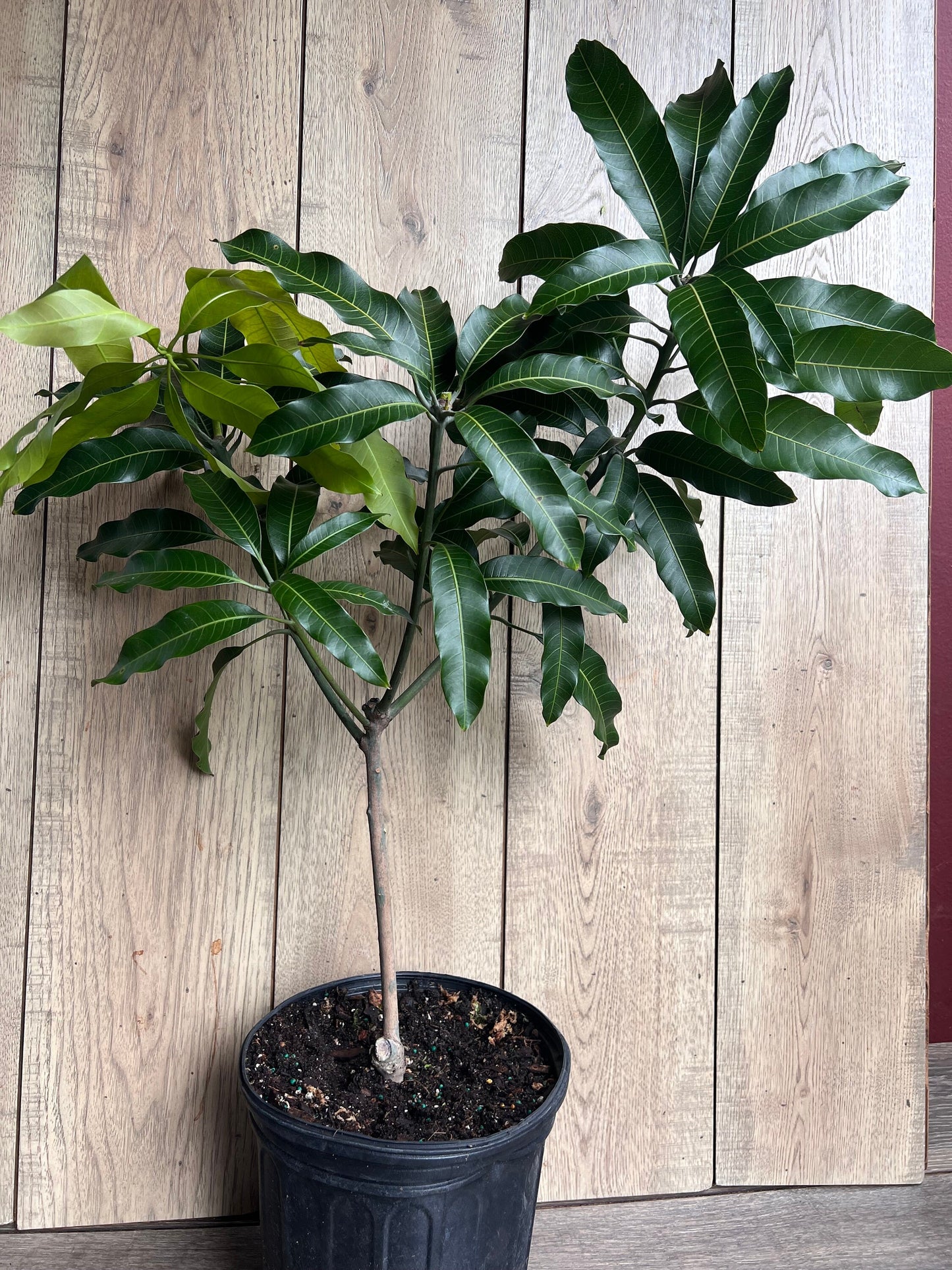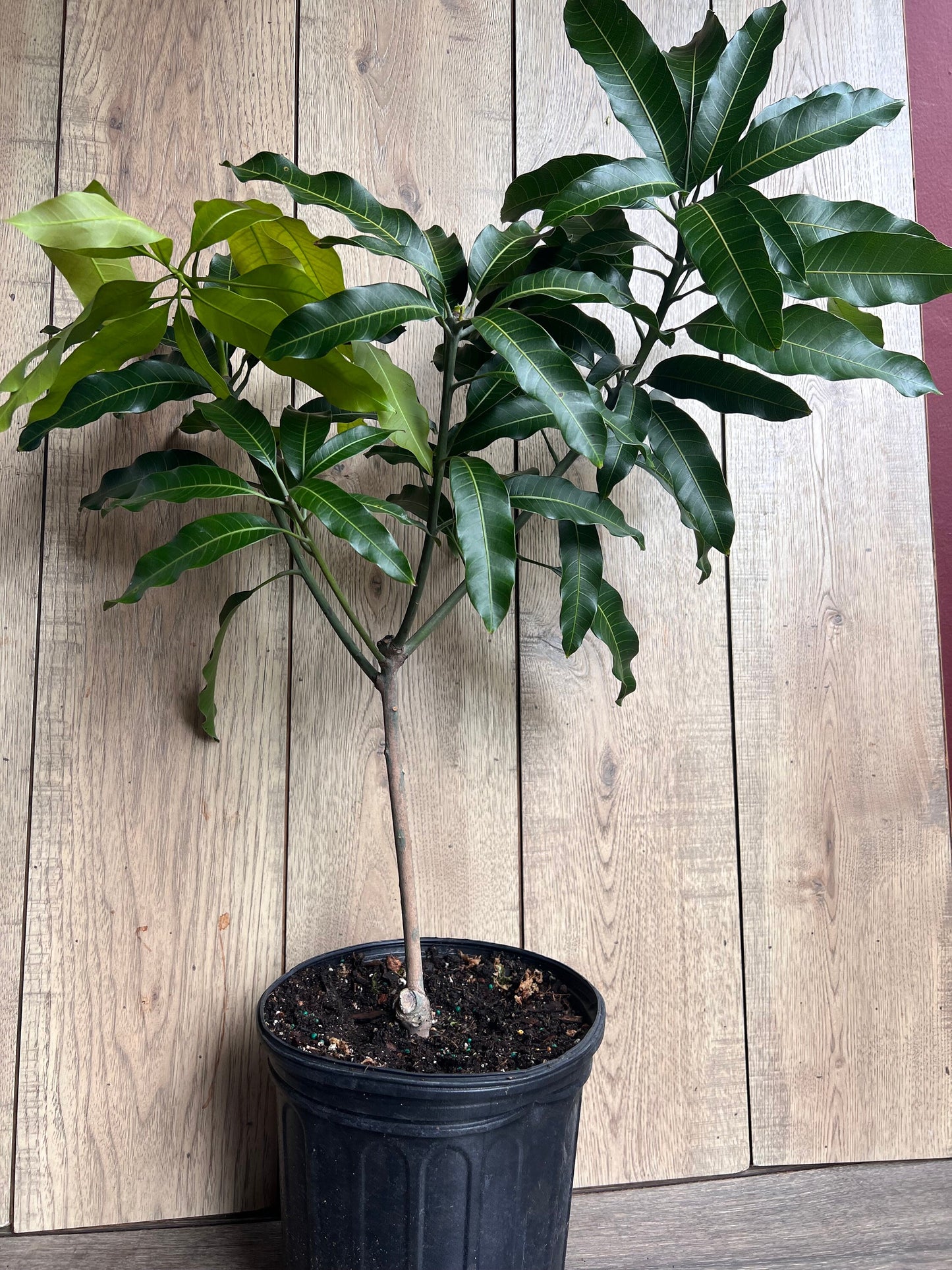Alphonso mango Tree, Manguifera, grafted in 3 gallons pot, No Ship to HI
Alphonso mango Tree, Manguifera, grafted in 3 gallons pot, No Ship to HI
Couldn't load pickup availability
The Alphonso mango tree (Mangifera indica) is one of the most sought-after mango varieties, celebrated for its exceptionally sweet, aromatic, and juicy fruit. Native to India, this tree produces golden-yellow mangoes with smooth, non-fibrous flesh and a buttery texture. Known as the "king of mangoes," Alphonso mangoes are prized for their rich flavor and vibrant appearance. The tree itself has dense, evergreen foliage and blooms fragrant white flowers before fruiting. Ideal for tropical and subtropical climates, the Alphonso mango tree requires full sunlight, well-draining soil, and warm temperatures to thrive.
Light Requirements
Mango trees need full sun, with at least 8 hours of direct sunlight daily. Indoors, place the tree near a south- or west-facing window for sufficient light. Outdoors, select a location with unobstructed sunlight all day. The tree will not perform well in shaded areas.
Watering
Regular watering is crucial during the growing season, but mature mango trees are drought-tolerant. Water deeply when the soil is dry to the touch, ensuring moisture reaches the root zone. Allow excess water to drain to prevent root rot. Reduce watering during the dormant period in fall and winter. Signs of overwatering include yellowing leaves and wilting.
Temperature
Mango trees prefer warm conditions, thriving in temperatures between 70°F and 85°F (21°C to 29°C). They are highly sensitive to cold and cannot tolerate temperatures below 40°F (4°C). In cooler climates, grow the tree in a container and bring it indoors during winter. Indoors, maintain a consistent temperature above 50°F (10°C) and avoid drafts.
Soil
The tree prefers loamy, well-draining soil with a pH of 5.5 to 7.5. For container plants, use a tropical plant potting mix or combine perlite, sand, and peat moss to ensure good drainage. Avoid waterlogged soil, as mango trees are prone to root rot.
Fertilizing
During the growing season (spring and summer), feed the tree every 4-6 weeks with a balanced fertilizer containing nitrogen, phosphorus, and potassium. Slow-release or liquid fertilizers work well. For indoor trees, dilute liquid fertilizer to half strength. Stop or reduce fertilizing in fall and winter. Monitor for nutrient deficiencies; yellowing leaves may indicate nitrogen deficiency, while brown edges could signal potassium deficiency.
Pruning and Maintenance
Prune mango trees during the dormant period to shape the tree or control size, especially if grown in a container. Remove dead or diseased branches to encourage healthy growth. Clean the leaves periodically to remove dust, which helps the tree absorb sunlight effectively.
Pest Control
Common pests include scale, aphids, and mealybugs, which may leave sticky residue on leaves. Inspect regularly and treat infestations with insecticidal soap or neem oil. Monitor for signs of fungal diseases, particularly in humid environments, and ensure proper air circulation around the tree.
Pollination and Fruit Production
Alphonso mangoes are typically self-pollinating, but cross-pollination can boost fruit yields. The tree produces small, fragrant flowers that develop into fruit after successful pollination. Indoors, hand-pollinate using a soft brush to transfer pollen between flowers. Once pollinated, fruit takes 4-6 months to mature. Adequate sunlight and warmth are essential for fruit production, especially for indoor trees.
Repotting
For container-grown trees, repot every 1-2 years or when the roots outgrow the container. Choose a pot 2-3 inches larger in diameter than the current one. Repot in early spring before the growing season, being cautious not to disturb the roots excessively.
Common Issues
- Yellowing Leaves: Often caused by overwatering, nutrient deficiencies, or poor drainage. Check soil moisture and nutrient levels.
- Fruit Drop: Stress from insufficient water, poor pollination, or nutrient deficiencies can cause premature fruit drop. Ensure consistent care during fruiting.
The Alphonso mango tree, with proper care, will reward growers with its highly aromatic, sweet, and buttery fruit. Its ability to thrive in warm, sunny environments makes it a perfect addition to tropical gardens or indoor collections in colder climates.
Share
